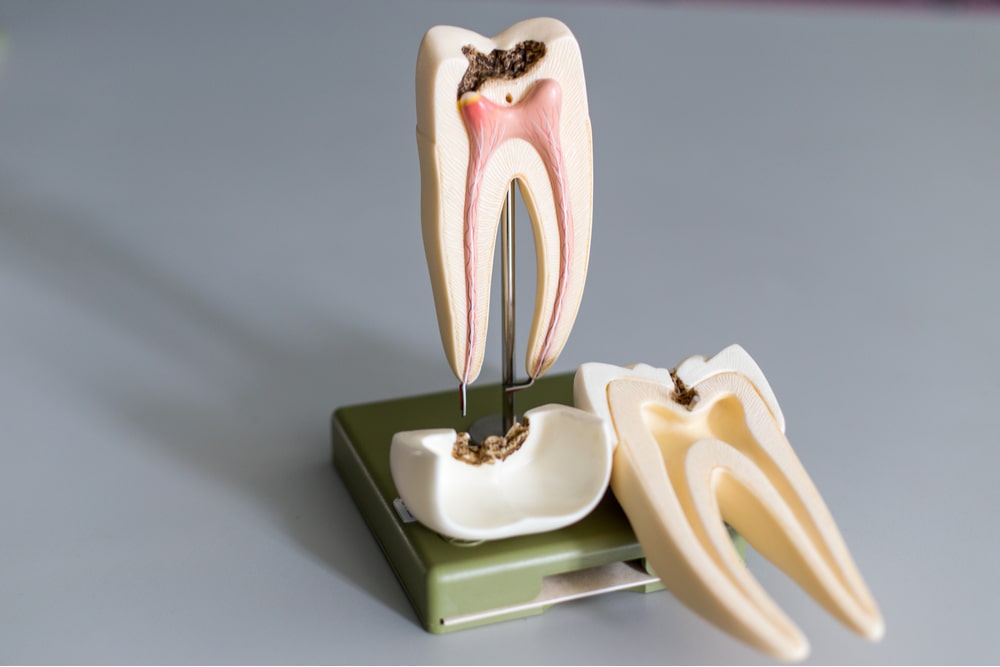Root canal therapy is an endodontic procedure used to remove all diseased pulp tissue (infected nerve cells and tissues inside the tooth) and replace it with filling material such as gutta-percha before restoring the tooth with a dental crown. Root canal treatment is usually considered for teeth with pulp infections as a result of damage caused by decay, old fillings, fractures, gum disease, or any injury.
Root canal therapy can consist of:
Post and Core
Post and core is an additional restorative treatment that may be performed after having root canal therapy in cases where there is a lack of remaining tooth structure. This treatment places posts in the empty tooth roots to help retain the tooth’s core and support the placement of a dental crown. This prevents the need for extraction and preserves what is left of your natural tooth structure.
Pulp Regeneration
Pulp regeneration is a state of the art endodontic treatment that helps patients retain their natural teeth, even when decay has occurred. It works best for immature teeth whose roots have not fully developed. Pulp regeneration delivers antibiotics and growth factors into the tooth to encourage root development in teeth with pulp infections. This essentially allows the dental pulp to heal and regenerate after being infected, which preserves both the inner and outer tooth structure.
Vital pulp therapy/Pulpotomy
Pulpotomy is a root canal performed on primary teeth. Vital pulp therapy is performed when there is still some healthy dental pulp present. During vital pulp therapy, only the diseased pulp is removed and the healthy tissue is left intact and treated with antibiotics to prevent future infection.
Root canal therapy can be used to treat:
Cracked Tooth
Teeth can crack as a result of injury or general wear and tear. When a tooth cracks, you may experience tooth pain, pain while chewing, and tooth sensitivity to hot and cold temperatures. Oftentimes, this pain may come and go, which can make it hard to locate the crack. In the case that a crack in the tooth is deep enough to reach the pulp, then a root canal will usually be recommended.
Traumatic Injuries
Traumatic dental injuries are usually caused by automobile accidents, falls, or sports. One of the most common injuries is chipped teeth, followed by cracked teeth, knocked out teeth, and teeth that have been driven deeper into the socket. Even if your teeth appear to be fine, they should still be evaluated to ensure that there is no underlying damage. There are different ways that your tooth may be treated, depending on the type and extent of the injury. In many cases, prompt root canal treatment can save a severely injured tooth.
Root Resorption
Root resorption occurs when your body rejects an injured tooth. It is characterized by a breakdown of the tooth’s roots that can cause the tooth to become loose over time. Root resorption can occur as a result of a traumatic dental injury, impaction, excessive tooth stress, or severe gum disease. Although many people assume this means extraction, root canal therapy can also be used to treat root resorption.
For more information on root canal therapy and endodontic treatment, schedule a consultation with Dr. Farahi and Dr. Etessam of SmileMcLean Dentistry today!

